Today we’re covering safety, but not necessarily safe handling or rules of weapon safety—although I will review that. No, today we’re talking about safety components. Particularly those put in place to keep you from “accidentally” firing your weapon. I’ll cover internal and external safeties and then add some additional safety measures you can take to secure your weapons—such as using a trigger or cable lock.
Rules of Weapon Safety
As I already said in the introduction, I first want to do a little review. So, let’s talk about safety!

First, you should know that no safety device beats actually handling your weapon safely. You might have the highest-rated, top-of-the-line, built for a king safety device or devices put in place. But if you don’t practice safe handling, no one cares. Bobby-Joe, down on range block number 3, doesn’t know you’d need an act of God to fire your weapon without pulling the trigger, and he shouldn’t have to wonder either. So, do us all a favor; no matter how “safe” your weapon is, please handle it safely.
In case you don’t know or have forgotten, let’s take a second to review.
- ALWAYS treat your weapon as if it is loaded. No, don’t play cowboys and Indians with an unloaded weapon. Bullets or not, it’s not a toy and should not be treated like one. The only thing you should be pretending is that it’s loaded, even when it’s not.
- Again, we aren’t playing cowboys and Indians, so don’t be pointing the thing at anything you don’t plan to actually shoot.
- When you do shoot, make sure you know what’s behind your target. Is that grandma back there, making fresh-baked cookies? Yeah, you probably aren’t trying to take out little ol’ granny, which is why it’s important to know what’s behind your target.
- If you’re out on the range, keep your weapon steady and downrange. And if this is a real-life threat, keep your weapon aimed at the danger; there’s no need to swing it around flagging innocent people.
How Do Safety Components Work?
Depending on the weapon system you’re operating, you might find that the safety features or devices put in place for safety are slightly different to drastically different from one another. For instance, some pistols have no external safety, it’s all found in the inner workings of the firearm. Then you have some firearms that have external and internal safety features.
This blog will cover a few different safety devices found in today’s market and give you a little insight into how they work.
Weapon Safety Components
If you’re going to own a weapon, it will have safety components put in place. Some weapons have internal safeties, some have external safeties, and some have both.
External/Manual Safety Components
Not all weapon systems have external safety levers, which you’ll see here in a moment. But, for those that do, it’s referred to as the safety lever. Here’s how a safety lever works.
Safety Lever
Safety levers are an external safety feature on some but not all weapons. The M9 Beretta, for instance, has an external decocking/safety lever. The decocking/safety lever prevents your pistol from firing when you don’t want it to. Basically, it allows the firing pin striker to line up with the firing pin when the hammer moves forward. The decocking/safety lever prevents this action from happening because it prevents the firing pin striker from aligning with the firing pin.
Trigger Safety
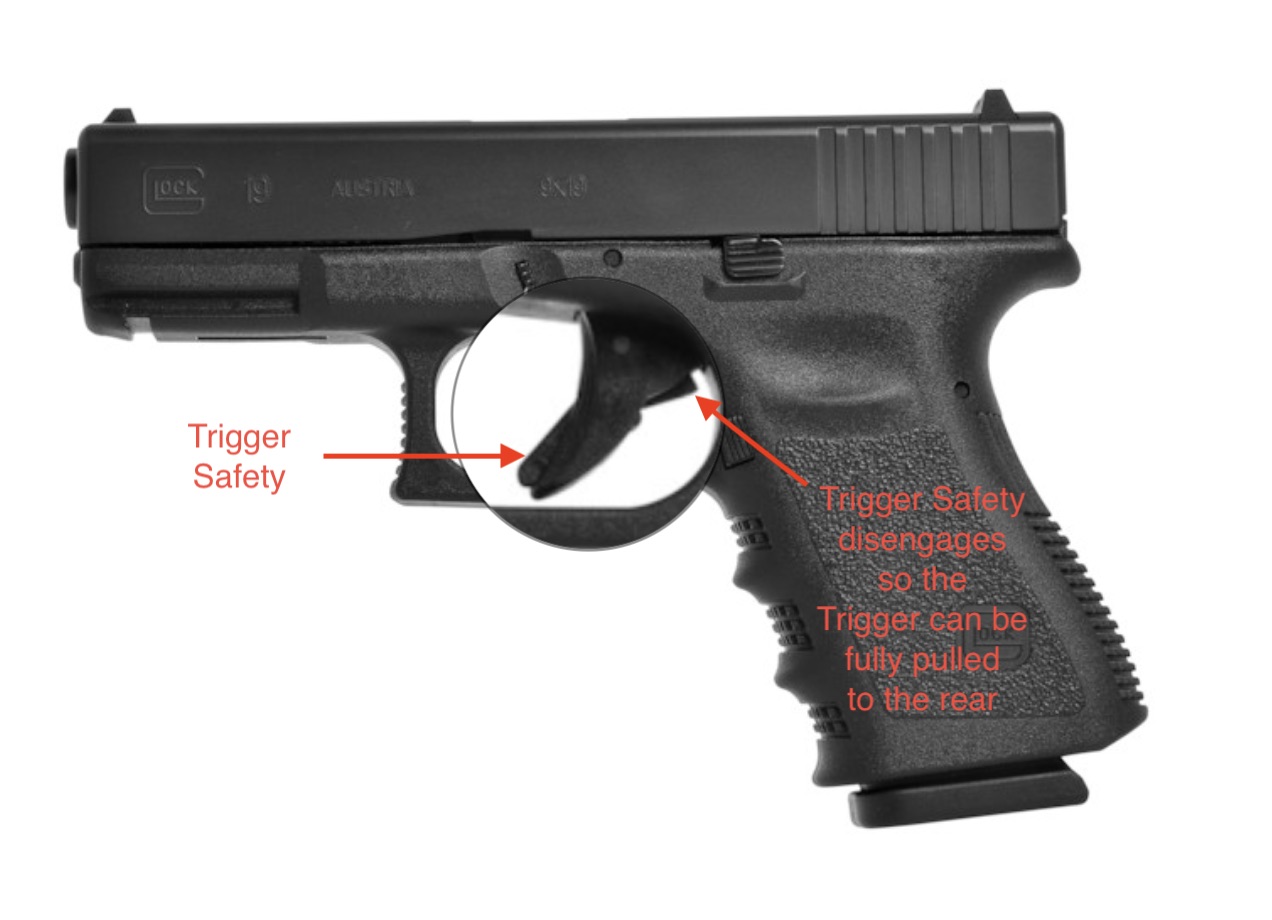
The trigger safety is step one in Glock‘s firing sequence. The safety is a part of the trigger, and unless it’s engaged, the pistol should not fire. Why? Because the trigger cannot be pulled all the way to the rear. And for a round to be fired, you must be able to engage the trigger.
This is how this safety feature works:
The trigger safety acts kind of like a block. To pull the trigger, the trigger and the trigger safety must be pulled back simultaneously. The purpose of this safety is to prevent the pistol from firing on its own accord if you were to drop it. The reason this works is that there is no pressure placed on the trigger/trigger safety.
Internal Safety Components
Some weapon systems have both internal and external safety features. And depending on what you’re shooting, your pistol may have different internal safeties than other pistols. An example of this is with Glock. Glock is known for not having an external safety. But, they have housed significant levels of safety within their pistols. Below are the internal safety features found in Glocks and the commonly used M9 Berretta (which is in the process of changing for the US Army and US Air Force).
Glock Safety Components | Safe Action System
Glock builds differently. And it’s their internal features and lack of external safety that either draws people to their weapons or makes them choose to go another route. If you’re comfortable without external safety, here are a few of the internal safeties you can expect, at least from Glock.
Firing Pin Safety
The firing pin must hit the primer for a round to fire, igniting it and discharging the round through the chamber and out of the muzzle. A firing pin safety is what prevents the firing pin from doing just that. This safety blocks the firing pin from moving forward when you aren’t getting ready to fire.
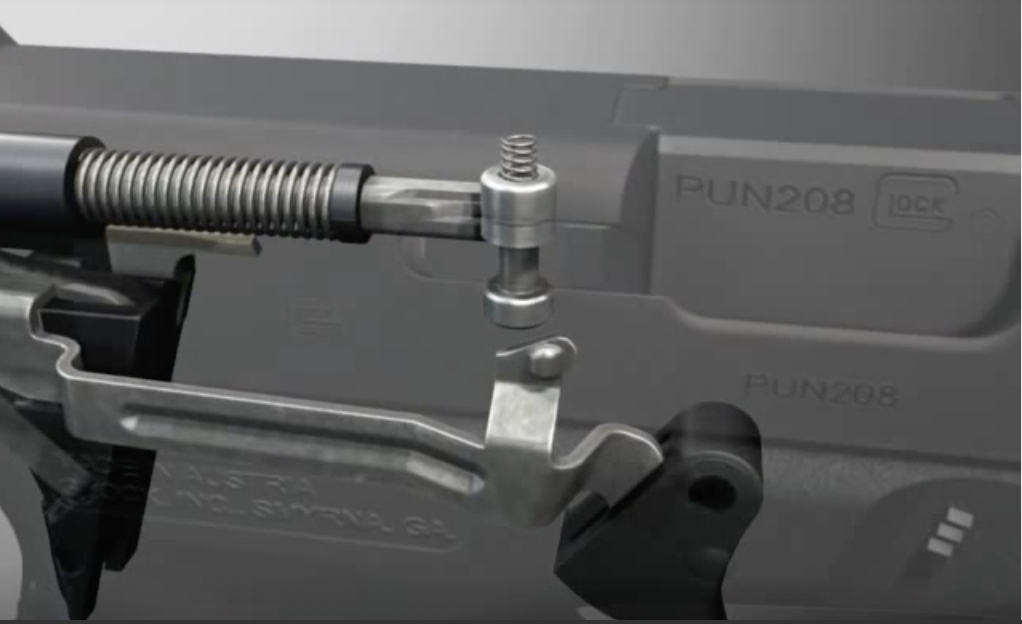
This is how this safety feature works:
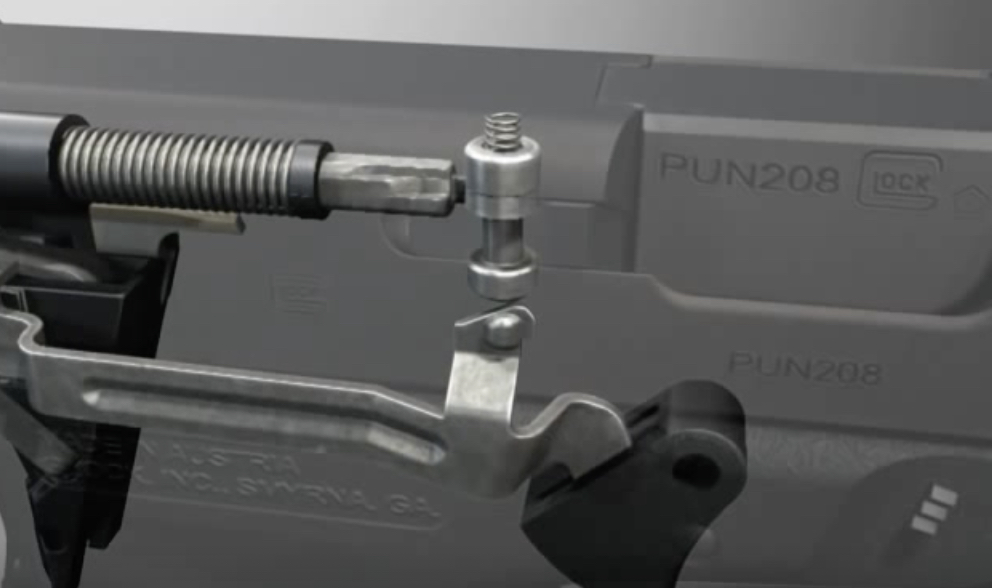
When you go to fire a round, you have to pull the trigger. When you pull the trigger, the trigger bar will push the firing pin safety up. This frees the firing pin channel and lets the firing pin enter. However, let’s say you decide, I don’t want to fire a round, but you’re already in the process of pulling the trigger.
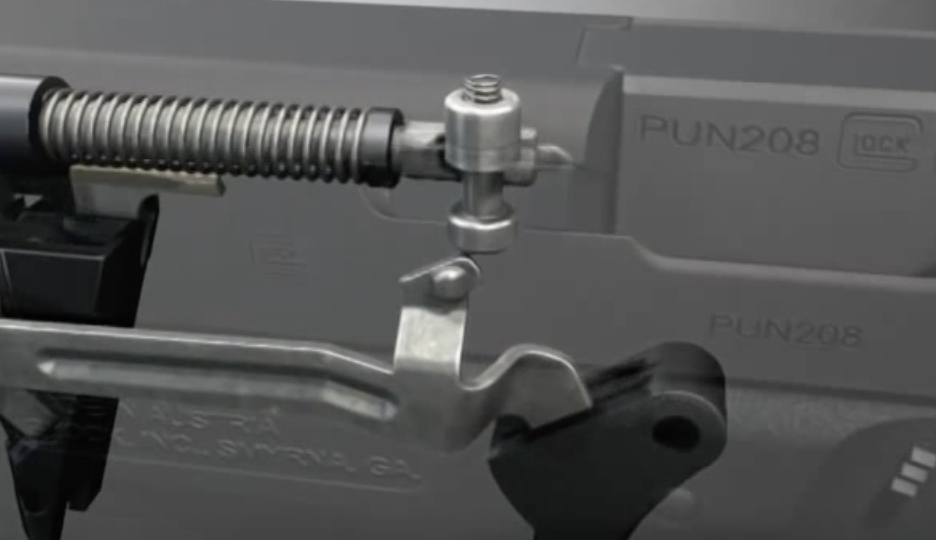
So, you release the trigger. When you do this, the firing pin safety will automatically resume its normal position, preventing the firing pin from engaging the primer.
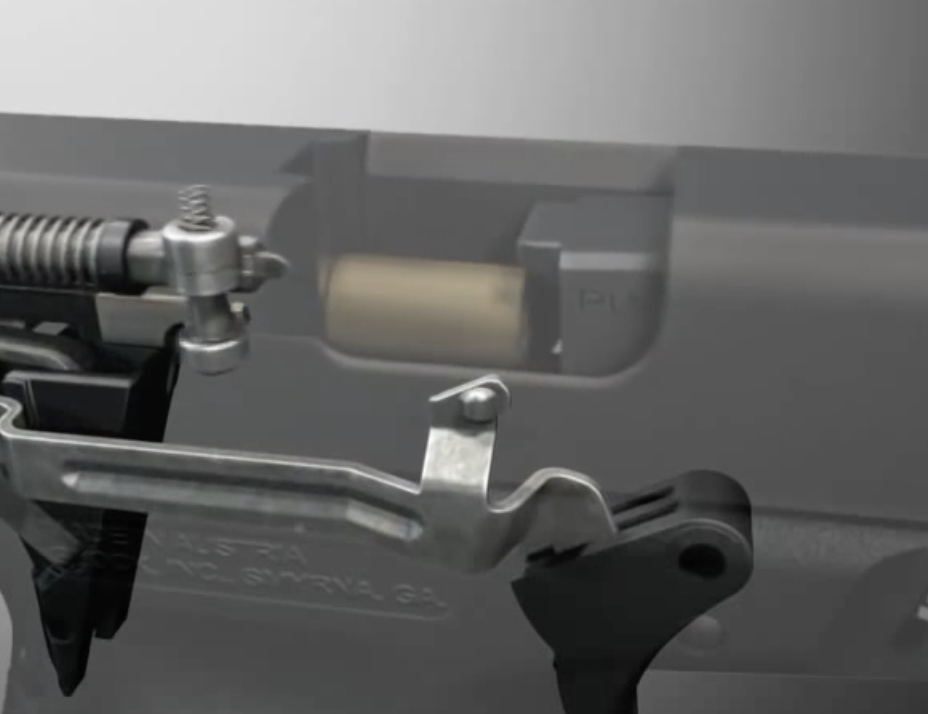
Drop Safety
A drop safety is put in place in case you drop your weapon. Not too long ago, Taurus had an issue with their weapons firing when they were dropped. Luckily they did a recall, and personally, I haven’t heard of any new drop safety issues. However, this is a big concern, and even if the issue did get fixed, it’s scared many people away.
We all know accidents happen. If you accidentally drop your weapon, you don’t want it firing a round when you didn’t pull the trigger. That’s how you accidentally get someone killed and end up in jail.
Glock series has a drop safety. Yes, I know we said that there’s a trigger safety, which prevents a round from going off when the pistol is dropped. Even still, there’s another drop safety in place.
The drop safety deals with the trigger bar rather than the trigger safety and resides on the safety ramp inside the trigger’s housing.
The trigger bar is responsible for engaging the backside of your firing pin, and it prevents the firing pin from moving forward when you don’t want it to.
This is how this safety feature works:
When you pull your trigger to the rear, the trigger bar should move down the ramp it rests on. When this happens, it releases the firing pin. After you’ve fired the round, the trigger bar will move back to its normal resting position and re-engage the firing pin. Basically, when you release the trigger, everything goes back to normal, and all the safeties go back to keeping your weapon from firing accidentally.
M9 Beretta Safety Components
While the M9 Berretta does have an external safety, they’re still known for their internal safeties and don’t rely on the single external safety.
Firing Pin Block
The firing pin block sits on the firing pin notch. It is responsible for keeping the firing pin from moving—unless you pull the trigger, that is. Once you actually pull the trigger, the firing pin block moves up and out of the firing pin notch so that the firing pin can do its thing.
Half-Cock Notch
The half-cock notch prevents the hammer from moving forward. For instance, if there happens to be a mechanical failure, that’s when the half-cock notch can help you out.
Safety Devices
There are, of course, extra safeties you can put in place, such as trigger and cable locks. These are good options for storage, not so good for carriers.
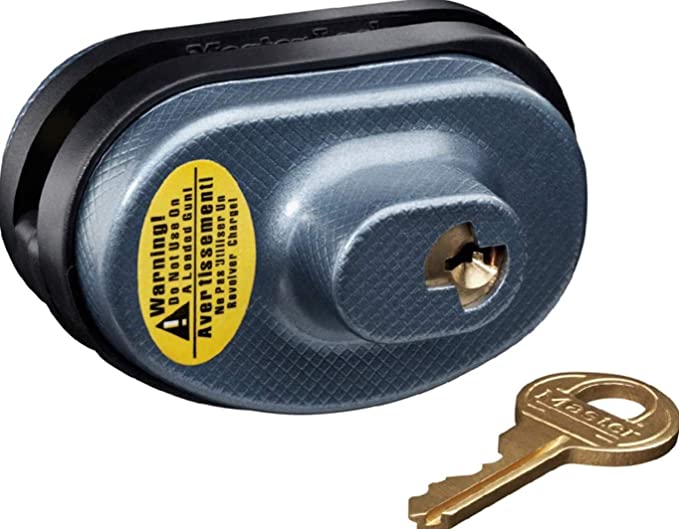
Trigger Locks
Trigger locks are pretty basic. They prevent the trigger from being reached. This is great if you have little ones or store the pistol in a place that could expose the trigger to being accidentally pulled.
Cable Locks
Cable locks are another safety device you can place on your pistol when storing it. The cable is intended to go through the pistol’s ejection port and magazine well. This prevents the weapon from being able to fire. It also prevents a magazine from being inserted.
Did we miss anything? Do you have further recommendations? Please, comment below. We love hearing from our readers!








Leave a Reply
Your email address will not be published. Required fields are marked *